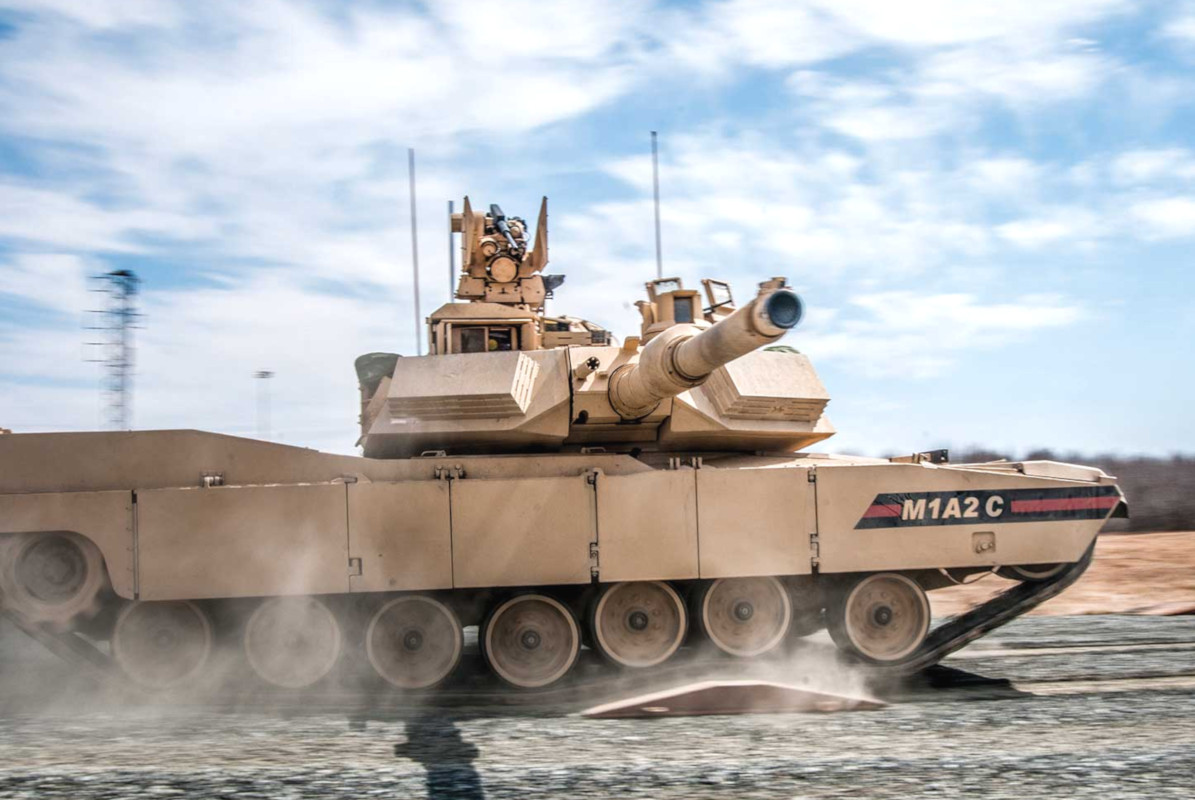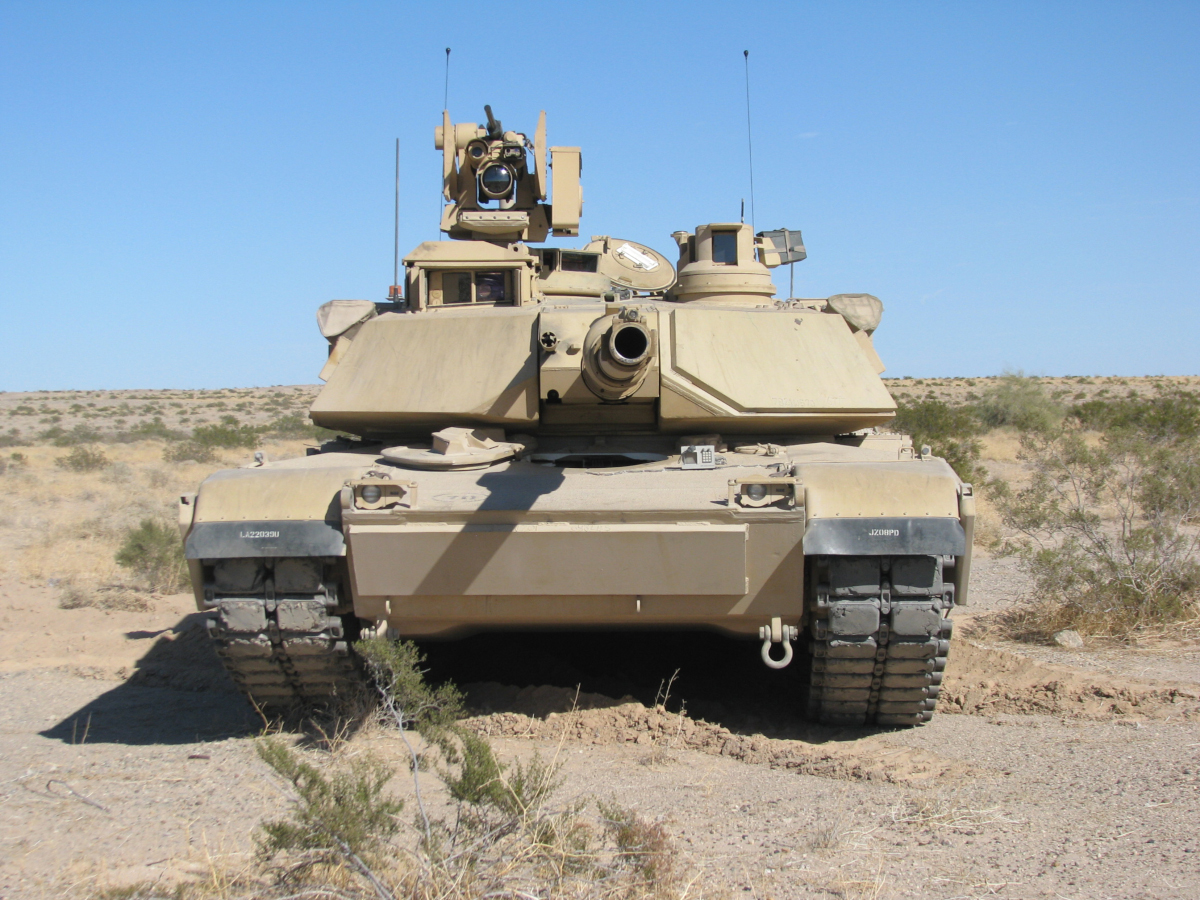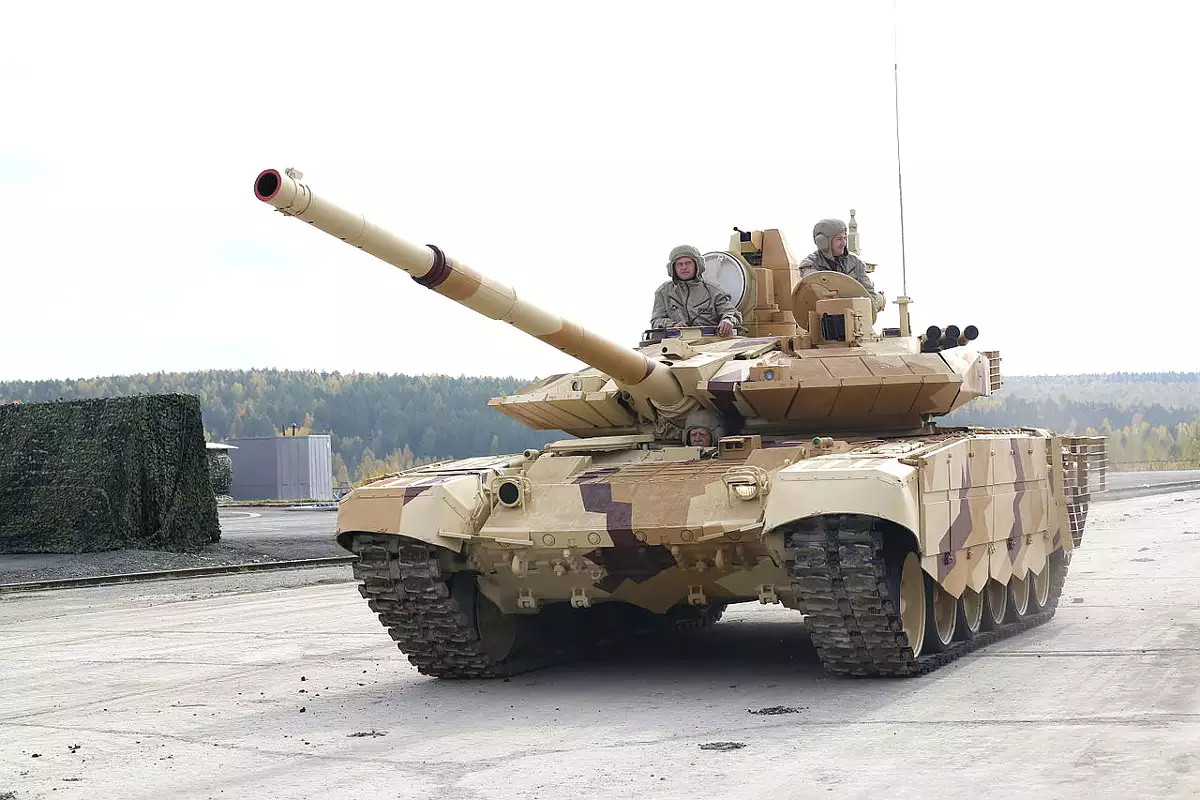A picture has popped-up online showing the latest variant of the Army’s M1 Abrams tank with what appears to be a new armor package on its turret. The U.S. Army is already in the process of adding the Trophy active protection system to the vehicles, which will help guard against anti-tank guided missiles and infantry anti-tank rockets. But the service is also interested adding additional passive armor in light of the threat of potential adversaries, such as Russia, with their own upgraded tanks and new armor-piercing shells.
The Army’s Yuma Proving Ground in Arizona posted a picture of an M1A2 System Enhancement Package Version 3 tank, or M1A2 SEPv3, with both Trophy and the add-on armor package, as well as explosive reactor armor, on its Facebook page on Feb. 21, 2019. It was one of a series of pictures marking a visit by U.S. Army Sergeant Major Michael Crosby, the Command Sergeant Major for the service’s recently activated Futures Command, to the facility. The proving ground is supporting a number of that command’s modernization initiatives.
The Army took delivery of the first updated M1A2 SEPv3, also now known as the M1A2C, in October 2017. General Dynamics Land Systems is in charge of the upgrade program.
“This version is the most modernized configuration of the Abrams tank, having improved force protection and system survivability enhancements and increased lethality over the M1A1 and previous M1A2 variants,” U.S. Army Lieutenant Colonel Justin Shell, then the Abrams Product Manager, said at the rollout in 2017. “The Abrams M1A2 SEPv3 tank will be the foundation for future incremental system upgrades and can host any mature technology the Army deems operationally relevant.”

There do not appear to be any specific announcements about improved passive armor for the M1A2 SEPv3 in the past beyond statements that the variant would include added ballistic protection. Earlier pictures of the prototype M1A2 SEPv3s show weights on the front of the turret, as well as similar weights on the hull front.
These surrogates were supposed to simulate the added weight of the SEPv3’s Next Generation Armor Package (NGAP). There had been no indication, however, that the final turret shape would change significantly.


The prototype for the preceding M1A2 SEPv2 variant was also tested with surrogate weights to simulate that version’s new Heavy Armor Package 3 (HAP-3) passive armor upgrade. The final design, however, did not feature any radical changes to the turret general shape.

It could also be an additional applique armor package that the Army is simply evaluating at this time and might not end up in the final M1A2 SEPv3 configuration. The added passive armor would just be the latest in a series of defensive additions to the M1A2 SEPv3 configuration.
In March 2017, the Army announced that it would begin installing explosive reactive armor (ERA) packages, known as the Abrams Reactive Armor Tile (ARAT), on tanks in Europe, which will also be a feature on the new variants. ERA works by placing “tiles” filed with explosives over specific portions of a tank. When an incoming projectile hits them, they explode outward, helping to prevent it from penetrating into the vehicle.

But ERA works best against tank shells, anti-tank guided missiles, or other anti-tank weapons that use high-explosive anti-tank warheads. These warheads need to detonate at a very precise point from the side of their target to be most effective. The explosive tiles can destroy or prematurely detonate them, causing them to malfunction.
The Trophy active protection system that will go onto the latest M1A2 SEPv3s is another “hard-kill” system that works by firing a shotgun-like blast to knock down incoming threats. The Army first announced it would install the Israeli-made defensive system on its tanks in September 2017.

Unfortunately, these systems are far less effective against fast-flying kinetic penetrators, such as those in modern armor-piercing discarding-sabot tank shells, which rely on sheer force to break through armor. So, there is still a need for a passive armor layer to defend against these threats.
That the Army might now be interested in additional armor protection beyond what it had previously planned for the M1A2 SEPv3 would make sense. There has been a general shift in focus within the U.S. military toward being prepared for a potential high-end conflict against “great power” adversaries, such as Russia and China, in recent years. Russia’s illegal annexation of Ukraine’s Crimea region in 2014, followed by the Kremlin’s active and conventional intervention elsewhere in that country on behalf of Ukrainian separatists, had already prompted the Army to begin pursuing efforts to rapidly revitalize its armored forces.
At the same time, Russia has been working on a fleet of upgraded tanks, as well as continuing to work on the new T-14 Armata. Though the Russian Army looks years away from acquiring any meaningful numbers of the T-14, it has made significant improvements to its existing T-72, T-80, and T-90 tanks.
The latest T-90MSs use the same 2A82 125mm main gun as the T-14, which allows them to use higher-velocity ammunition. The Russians developed the 2A82 specifically to not require any additional internal space inside a turret over the previous 2A46, which makes it readily adaptable to existing tanks with the older gun. It seems likely that the improved T-72B3s and T-80BVMs, or future iterations thereof, will also get new main guns.

The problem with more passive armor is that it also adds significant additional weight to the Abrams, which could limit its mobility. The existing variants of the tank tip the scales at more than 70 tons, making them some of the heaviest main battle tanks in the world.
Separate upgrades to help the M1 simply out-range opponents might help mitigate the need for further passive armor upgrades to defeat increasingly threatening kinetic ammunition. The Army is in the process of developing the next iteration of the Abrams, known variously as the M1A2 SEPv4 or M1A2D, which is set to feature greatly improved sensors to increase the range at which it can spot and engage threats.
An improved gun, either a longer barrel variant of the tanks existing 120mm, or a larger caliber design altogether, will probably be part of the new variant, as well. The Army has talked in the past about networking the tanks together with other vehicles, including unmanned ground vehicles, as well as unmanned aerial vehicles, in order to use precision-guided rounds against targets beyond its own line-of-sight.
The M1A2 SEPv3 already includes an ammunition data link to support re-programmable ammunition, including the future XM1147 Advanced Multi-Purpose (AMP) shell. The multi-function AMP will replace four different existing rounds, including two variants of the M830 high-explosive anti-tank shell, the M908 high explosive shell for destroying fortifications and other “obstacles,” and the M1028 anti-personnel canister shell.

But added range is not something that armored units will always be able to take advantage of, especially in dense urban environments, which the U.S. military views as an increasingly likely setting for future conflicts. On the other hand, discarding-sabot tank shells are not necessarily as much of a threat in these types of contrained battlespaces. Regardless, Abrams at their current weight already tear up paved roads and have difficulty safely crossing smaller bridges and adding any more heavy armor would only exacerbate those issues in an urban fight.
In the period following the U.S.-led invasion of Iraq, the Army did developed what became known as the Tank Urban Survival Kit (TUSK) specifically for Abrams-equipped units operating in city environments. It’s possible the armor package that Sergeant Major Crosby saw is a new modular or otherwise readily reconfigurable kit that the service can install or remove from the Abrams depending on the threat level.
From the latest picture of the M1A2 SEPv3 prototype, if nothing else, we can see that the Army is continuing to at least evaluate its passive armor options to ensure the M1’s hide is a tough as possible, and as is practical, to guard against the newest threats from potential adversaries.
Contact the author: jtrevithickpr@gmail.com
